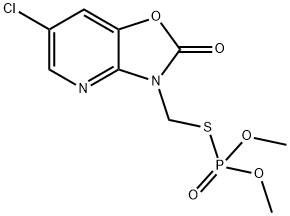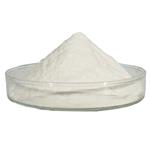Azamethiphos is an organothiophosphate insecticide. It can be used as a veterinary drug used in the salmon fish farming for controlling parasites such as salmon lice (Lepeophtheirus salmonis), a marine ectoparasitic copepod on salmonid species. Its primary target is on the acetylcholinesterase, a serine hydrolase involved in neurotransmission at cholinergic synapses and neuromuscular junctions.
Intorre, L, et al. "Safety of azamethiphos in eel, seabass and trout." Pharmacological Research the Official Journal of the Italian Pharmacological Society 49.2(2004):171.
Kaur, K, et al. "Mechanism behind Resistance against the Organophosphate Azamethiphos in Salmon Lice (Lepeophtheirus salmonis). " Plos One 10.4(2015):e0124220.
white to light yellow crystal powde
Azamethiphos is used to control flies and other insect pests in
animal houses and also public hygiene and health pests such as mosquitoes
and cockroaches. It has recently been used to control sea lice in
salmon.
Synergistic insecticidal and acaricidal organophosphorus compound
ChEBI: Azamethiphos is an organic thiophosphate, an organothiophosphate insecticide, an organochlorine insecticide and an organochlorine acaricide. It has a role as an EC 3.1.1.7 (acetylcholinesterase) inhibitor and an agrochemical. It is functionally related to an oxazolo[4,5-b]pyridin-2(3H)-one.
Moderately toxic by ingestion andskin contact. When heated to decomposition it emits toxicvapors of NOx, SOx, POx, and Cl- .
Azamethiphos is metabolised in mammals via hydrolysis, followed by
opening of the oxazolinone ring and conjugation of the resultant
aminopyridinol as the glucuronide and sulfate ester.
Azamethiphos is metabolized via the cleavage of phosphorothiolate
C?S bond, followed by N-demethylation and
opening of the oxazolinone ring and conjugation of the
resultant aminochloropyridinol as the glucuronide and
sulfate ester.
Azamethiphos is unstable in alkalis and acids. The DT50 values at pH 5,7
and 9 were 800,260 and 4.3 hours, respectively (PM).
Acute oral LD50 for rats is 1180 mg/kg.
Inhalation LC50 (4 h) for rats is >560 mg/m3 air. ADI is
0.025 mg/kg.



